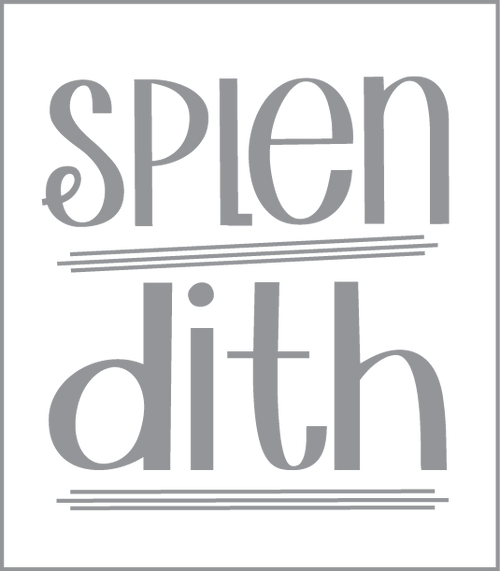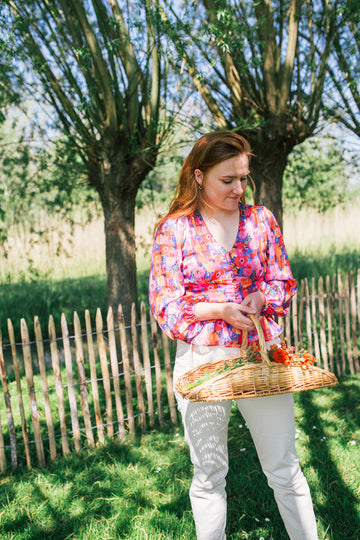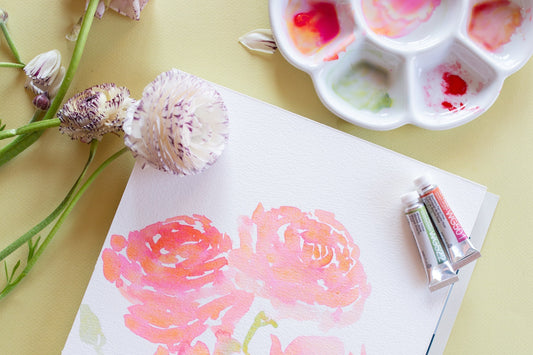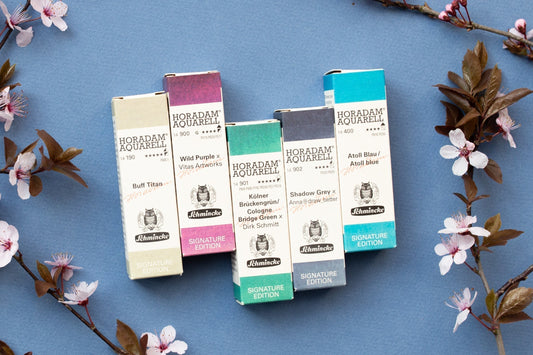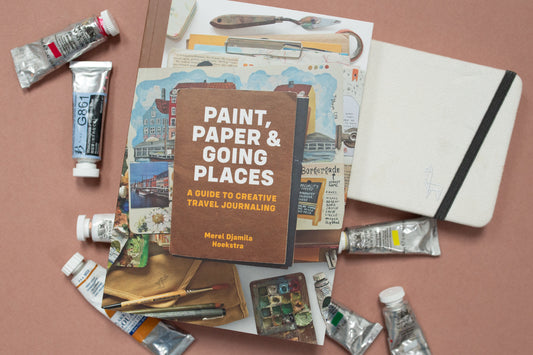As a watercolorist, you know how important it is to know and understand the colors of your paints. One of the best ways to use your watercolor palette to its full potential is to create a swatch card. This card will not only help you get to know the individual colors in your watercolor set better, but also help you discover the beautiful hues you can create by mixing colors. In this blog, you will learn step by step how to create a comprehensive swatch card and why it is an essential tool for any artist.
What is a Swatch Card?
Supplies
To make your swatch card you will need the following:
- Your watercolor palette , I used this one with 24 colors.
- Watercolor paper (preferably good quality, I used Baohong )
- A ruler
- A pencil
- A brush, I used the Heritage round 6
- Clean water and a water bowl, I used this super handy one with two reservoirs.
- Paper towels or washable wipes
- Possibly a fineliner or marker for labeling the colors

Steps for Making a Swatch Card
Step 1: Preparing the Paper
Start by cutting your watercolor paper to a size that works comfortably. I used 1x1cm per color, you will need a little more space for the color title. If you have 24 colors, you will need at least 26x26cm paper. Next, draw a grid on the paper using a ruler and pencil. Each square in the grid represents a color or mixture of colors. For a 24 color palette, you might want to make a 24x24 grid so that you can compare each color to every other color. You will also draw a box for the color title.
Step 2: Write down the color names
In the first row and column of your grid, put the names of the colors in your palette. Start at the top left with the first color and work your way down and to the right horizontally and vertically. This will give you the pure colors both horizontally and vertically, which will help with mixing later.
Step 3: Applying Mixing Colors
Now the real work begins: mixing the colors. Fill in the squares by mixing the color of the row and the color of the column. For example, if you are in the square where Hansa Yellow Light and Ultramarine Blue intersect, mix these two colors on your palette and apply the mixture to that square. Work systematically so that you do not miss any squares. On the middle diagonal, paint the pure color. Below the diagonal, paint with a highly pigmented color. Above the diagonal, dilute the color with more water.
Step 4: Vary the Proportions
For a more in depth swatch chart you can show variations in the mixing ratios. So one with 75% of the first color and 25% of the second, one with a 50/50 mix, and one with 25% of the first color and 75% of the second. This will give you an even better idea of the possibilities. So you can easily make more of these charts. Each time they will vary from each other.
Step 5: Drying Time and Labeling
Allow your swatch card to dry completely before proceeding.
Benefits of a Swatch Card
A well-made swatch card offers numerous advantages:
- Overview and Reference: It gives you a clear overview of all colors and mixing possibilities, which helps you choose the right colors for your project.
- Efficiency and Time Saving: Instead of wasting time trying out mixtures while painting, you have an instant visual reference.
- Deepening your color knowledge: By making the swatch card you will get to know your color palette much better, which will help you to work more creatively and confidently.
 Conclusion
Conclusion
Judith
